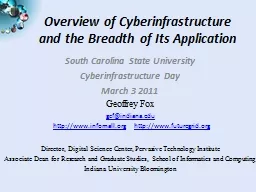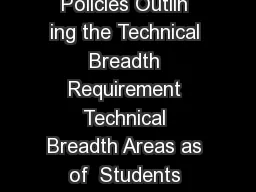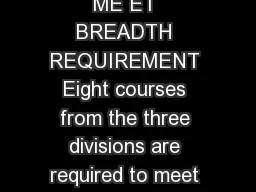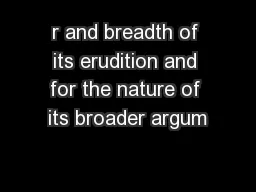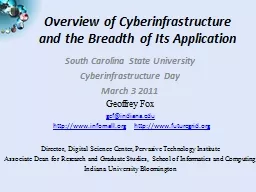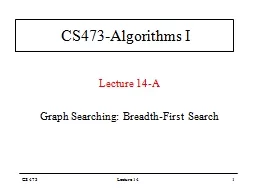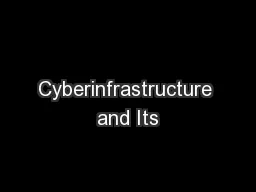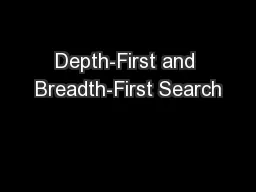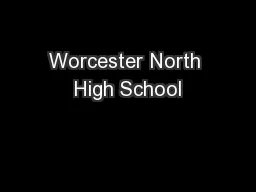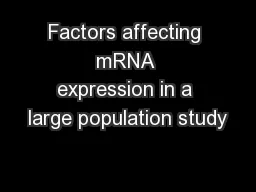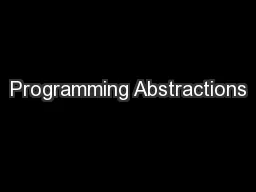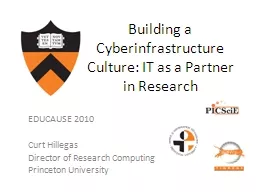PPT-Overview of Cyberinfrastructure and the Breadth of Its Application
Author : rayfantasy | Published Date : 2020-06-16
South Carolina State University Cyberinfrastructure Day March 3 2011 Geoffrey Fox gcfindianaedu httpwwwinfomallorg httpwwwfuturegridorg Director Digital Science
Presentation Embed Code
Download Presentation
Download Presentation The PPT/PDF document "Overview of Cyberinfrastructure and the ..." is the property of its rightful owner. Permission is granted to download and print the materials on this website for personal, non-commercial use only, and to display it on your personal computer provided you do not modify the materials and that you retain all copyright notices contained in the materials. By downloading content from our website, you accept the terms of this agreement.
Overview of Cyberinfrastructure and the Breadth of Its Application: Transcript
Download Rules Of Document
"Overview of Cyberinfrastructure and the Breadth of Its Application"The content belongs to its owner. You may download and print it for personal use, without modification, and keep all copyright notices. By downloading, you agree to these terms.
Related Documents

